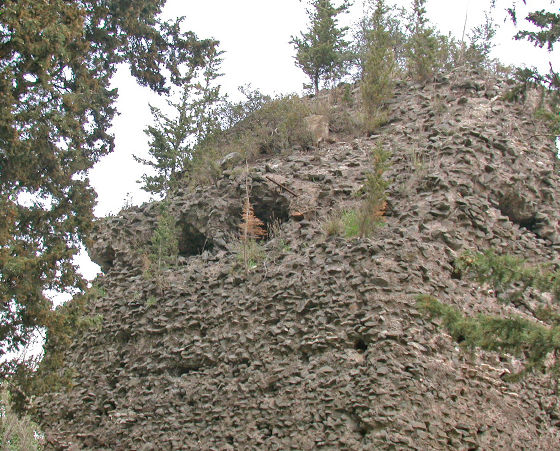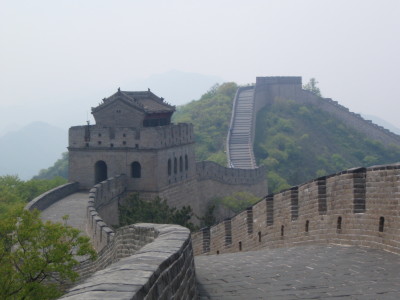Concrete of Roman times boasting durability as much as 2000 was increasing in strength by corrosion of seawater

Although I tend to think that concrete is modern technology, in reality also to ancient Rome "Roman · ConcreteThere is a building material called "PantheonYaTrajan marketIt was used in buildings such as. It is said that the lifespan of modern concrete is about 100 years, the structure of concrete found from underwater actually endured the year 2000 of the year, "Why is it so durable so much?" Research was carried out and it was announced in the latest research that it was a mechanism to raise strength by seawater corrosion.
New studies of ancient concrete could teach us to do as the Romans did
https://phys.org/news/2017-07-ancient-concrete-romans.html
Phillipsite and Al-tobermorite mineral cements produced through low-temperature water-rock reactions in Roman marine concrete | American Mineralogist
http://ammin.geoscienceworld.org/content/102/7/1435
According to a study conducted by a geologist at the University of Utah, Mary Jackson, the bonding strength of Roman · concrete is due to its structure and minerals contained in sea water, and seawater passes through the gap of concrete, strengthening the bonding of minerals It has a structure called. In fact, around 79 AD in ADGaius · Pliny · SekundusIn the book "Naturalis Historia" wrote, it is written about the structure of concrete which can increase durability by exposure to seawater.

In order to make concrete, first make mortar by mixing volcanic ash, lime and sea water and pour it into the mold containing volcanic rock which becomes aggregate of concrete. When volcanic ash, water and quicklime are mixed, a compound having binding ability is producedPozzolanic reactionIs generated,TuffConcrete is completed as you can when you can.
It is used as a material of modern mortarPortland cementAlthough sand and gravel are used as aggregate, the big difference from Roman · concrete is that each particle is configured not to cause a chemical reaction. When a chemical reaction occurs, the concrete becomes gel-like, and cracks will enter and durability will be lost.

One of the reasons why Jackson investigated why so much the durability of Roman concrete is so much is that the intergrowth of minerals between aggregate and mortar is to prevent cracks. Since the surface of the aggregate of modern concrete does not cause chemical reaction, cracking tends to occur as the structure becomes longer, but even if there is length of the structure in Roman · concrete it is difficult for cracks to enter due to intergranular crystals of minerals It is.
Also, Mr. Jackson and others participated in another project which took place from 2002 to 2009, and found that we found an unusual mineral called alumina tobermorite from the mortar of Roman · concrete in seawater. Alumina Tobermorite is crystallized in lime particles by the pozzolanic reaction, but if it is tried to artificially produce alumina tobermorite, it requires a very high temperature laboratory, and a very small amount of the produced substance As Jackson said, "It is very difficult to produce alumina tobermorite".
In a new study, Jackson et al. Investigated by various methods such as micro diffraction and microfluorescence analysis and found that alumina tobermorite andPhillip siteMinerals likePumiceOf particles and pores. Jackson and colleagues who saw the results of studies so far have confirmed that concrete life is limited only by pozzolanic reaction so something else is growing minerals in a low temperature environment even 100 years after the concrete is completed I thought that it should have been. And in this survey, we concluded that mineral grew as seawater passed through breakwaters made of concrete and pier, melting components of volcanic ash.

Alumina Tobermorite is a substance containing a lot of silicic acid, and it has the same shape as crystals in volcanic rock. Since crystals are flat and have a power to bond host rock tightly, concrete will become harder as alumina tobermorite grows. In modern times Roman concrete has further increased strength by using the process of "corrosion" which is generally regarded as a bad meaning.
Then why is not this Roman concrete used in place of Portland cement in modern times? Jackson says that "the recipe was completely lost". Although attempts to decipher documents of ancient Roman have been done, of course, the exact method is still unknown as of 2017. In addition, because it takes time to raise the strength in seawater and the compressive strength is lower than that of Portland cement, the possibility of being widely utilized as it is in the modern era is considered to be low.

On the other hand, there is a plan to make an artificial lagoon for tidal power generation in the UK, and it is thought that it is necessary to operate 120 years to cover the construction cost. Therefore, what is thought to create a lagoon capable of withstanding corrosion is Roman · concrete technology. However, Jackson and colleagues continue to conduct research as to what kind of chemical reaction over a long period of time there are still many mysteries remaining.
Related Posts:
in Science, Posted by darkhorse_log







